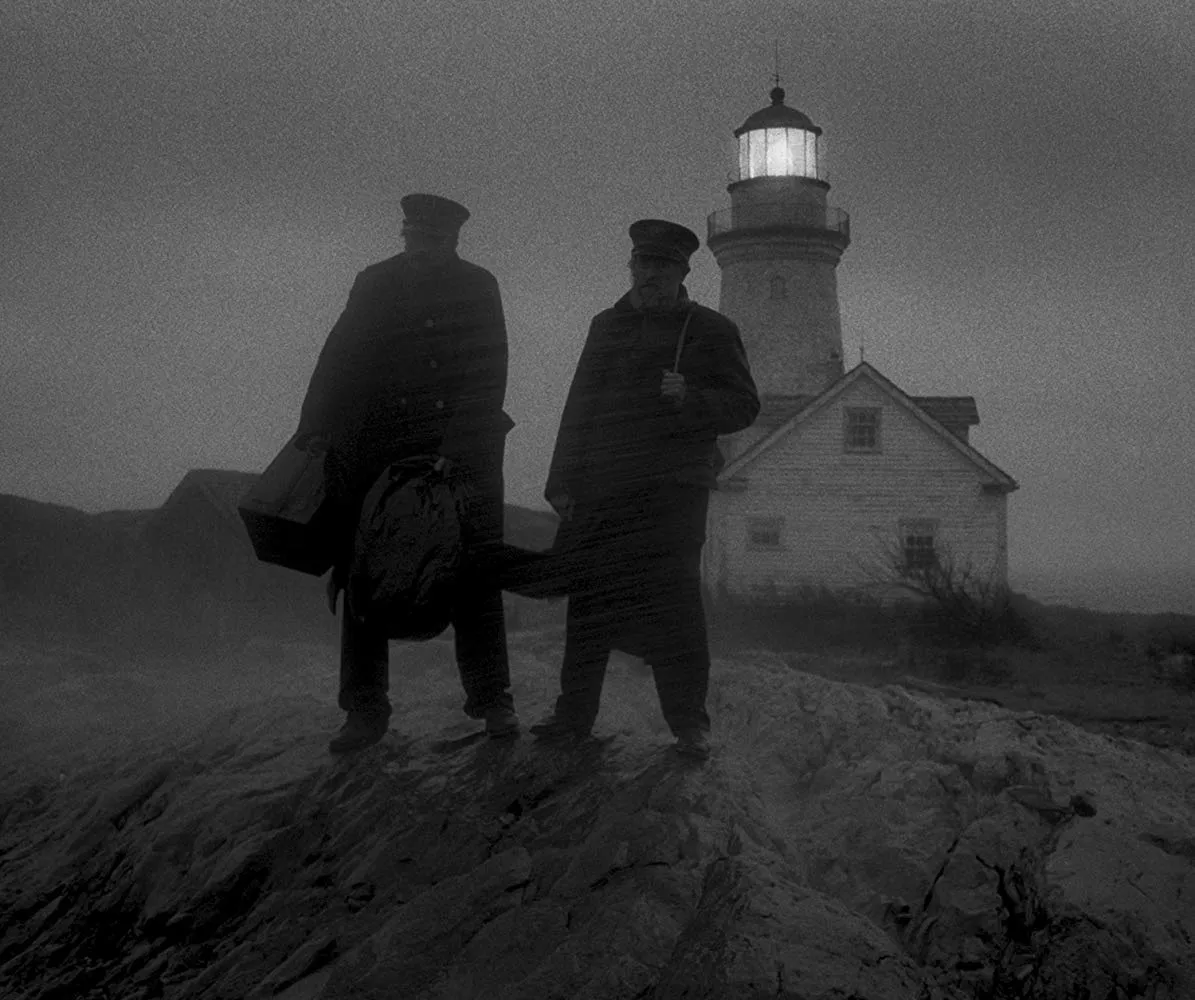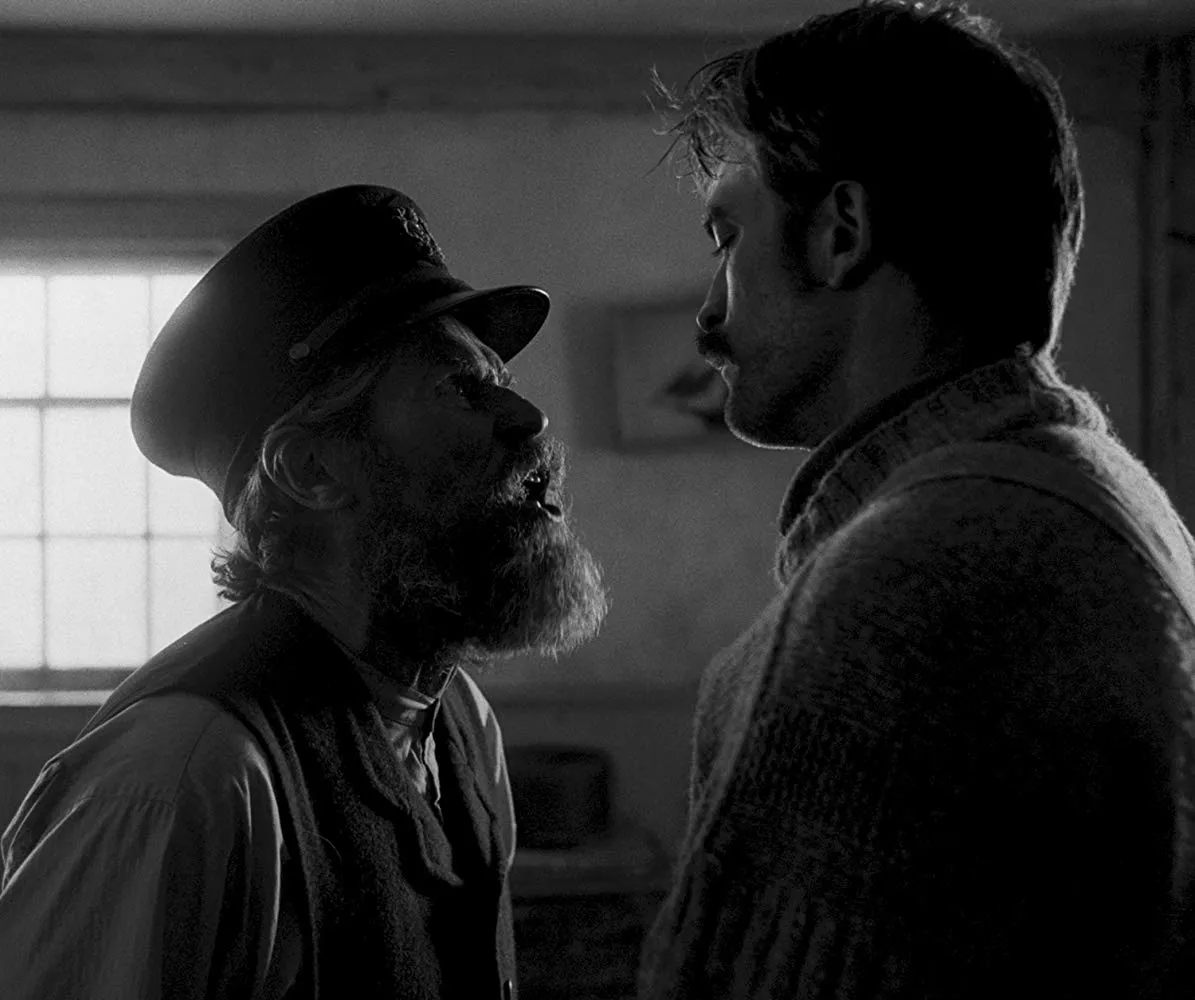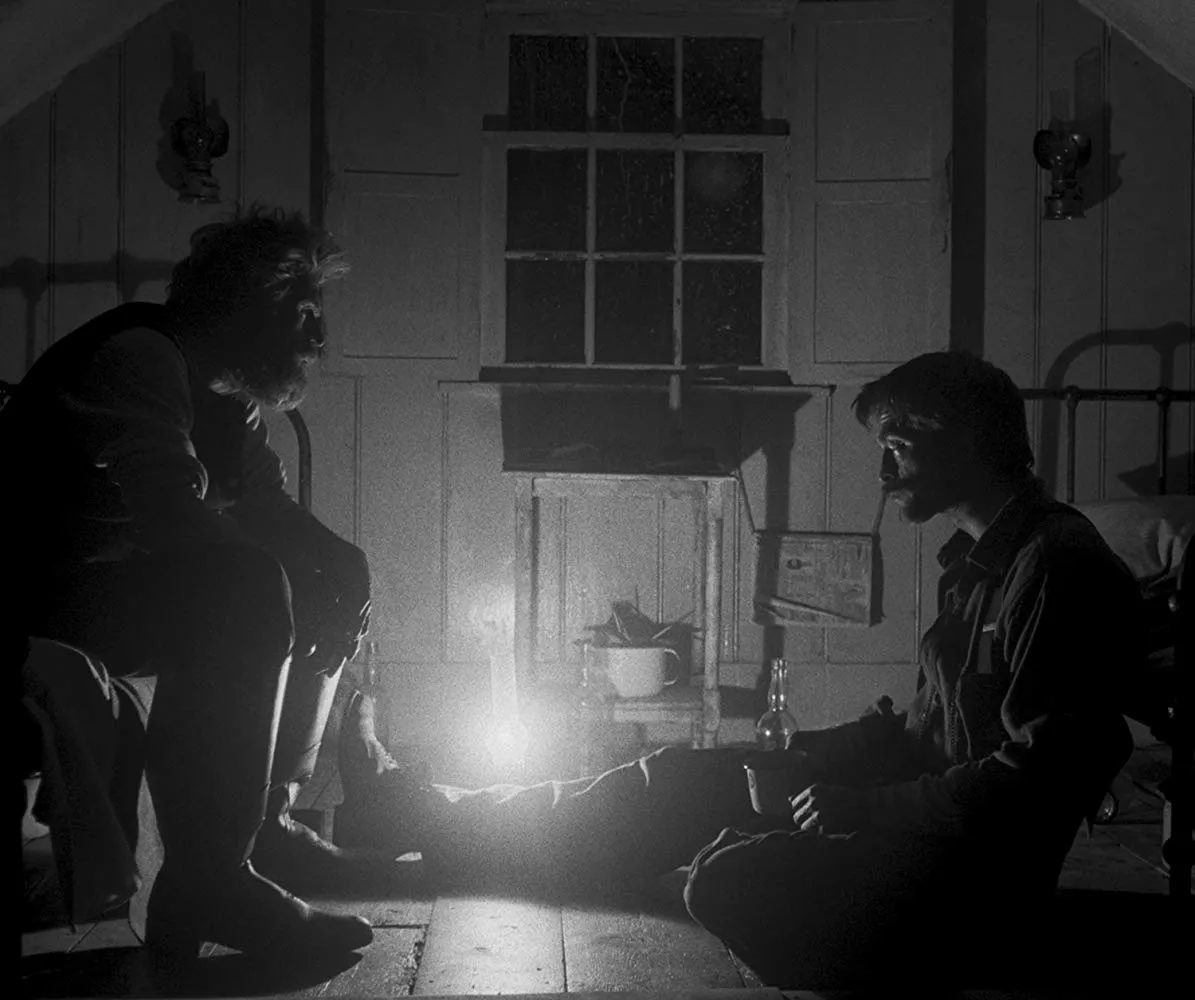The Lighthouse: A Descent into Madness
A former lumberjack, Ephraim Winslow, arrives on a remote island. He’s there to assist Thomas Wake, an aging former sailor and lighthouse keeper, for the coming weeks. This seasoned sea dog gives the newcomer no respite, ordering him to scrub the cabin floors repeatedly and clean the pipes while he himself slumbers after an easy night shift, merely tending to the lighthouse’s lamp. But everyone has their breaking point.

Robert Eggers transports his signature archetype of the isolated protagonist teetering on the brink of insanity from the 17th century to the 19th. Gone are the bonnets and desolate forest edges, replaced by grimy sailor caps and a remote island haunted by the mournful drone of the lighthouse. The era and its trappings—dialects, religious beliefs—may have shifted, but human nature remains unchanged. Like Thomasin and her family, Wake and Winslow are deliberately cast into a mystical wilderness. In both scenarios, the protagonists find themselves alone, battling an irrational world (including their own inner demons), and are doomed to fail as they attempt to comprehend it within the confines of existing dogma.
Delving Deeper into the Abyss

In “The Lighthouse,” the concept of the otherworldly, the transcendental, is arguably even more crucial than in “The Witch.” In the latter, the transition into another, incomprehensible dimension was achieved through subtle technical choices like the 1.66:1 aspect ratio or natural lighting. In Eggers’s new film, the environment enveloping both the viewers and the characters is far more uncompromising. The stylish monochrome, the peculiar 1.19:1 aspect ratio, the constant play of shadows, and the overwhelming sound design create a truly surreal purgatory where the protagonists are locked in an endless struggle against each other and their own sins.
Echoes of Expressionism and Beyond

The stylistic nod to German Expressionism is, of course, not merely for show. Eggers draws upon a movement whose films excelled at portraying madness through subtle hints and nightmarish visions. The question then becomes how to interpret the numerous references to cinema, literature, and art that permeate “The Lighthouse,” from Coleridge to Poe, from Lang to Tarr. It’s no surprise that this abundance of intertextuality irritates some critics, who see it as pretentious intellectualization, accusing Eggers of trying to be more profound than he is. However, the answer may be simpler: the director assembles this film from disparate fragments of various artistic works to emphasize the irrationality of life in “The Lighthouse.” How can one understand a world that shatters into contradictory pieces? How can one survive amidst madness, when an 18th-century thought collides with a 20th-century idea before your very eyes? Only by succumbing to insanity.
A Descent into Mutual Loathing

This is precisely what Thomas Wake and Ephraim Winslow do throughout the film. Both harbor dark secrets, skeletons in their closets, which they can only reveal to each other in drunken evening stupors. Conflict is inevitable. The old man wants to remain king of the hill, alone with the lighthouse lamp, which, in Freudian terms, serves as his wife. How can he maintain his sanity when another greenhorn threatens his dominance (the previous fool has already been eliminated from the championship race)? Ephraim faces his own challenges. Having witnessed the death of a cruel lumber foreman who constantly humiliated him, he never imagined he would find himself in the clutches of another oppressor (this time bearded, foul-smelling, and prone to flatulence). “The Lighthouse” is, of course, open to interpretation and provides ample room for it. However, it seems that it was never intended as anything more than a story about mad, mutually loathing scoundrels whose only path leads to hell, to eternal wandering for sins they refuse to acknowledge.
“The Lighthouse” is not merely a talented stylistic exercise (especially given how often seemingly simple exercises have yielded excellent films in recent years, such as “Piercing,” “Why Don’t You Just Die!,” and “The Detective with a Ponytail”), but a true cinematic katabasis, a metaphorical descent into the underworld. Questions about the narrative’s detachment or the artificiality of Eggers’s environment are valid, but in his films, the portrayal of madness has always felt synthetic, unnatural. And can the viewer truly connect with characters in a film about morally depraved men who spend their days singing vulgar sea shanties, guzzling liters of alcohol, and masturbating to a mermaid figurine in a shed?